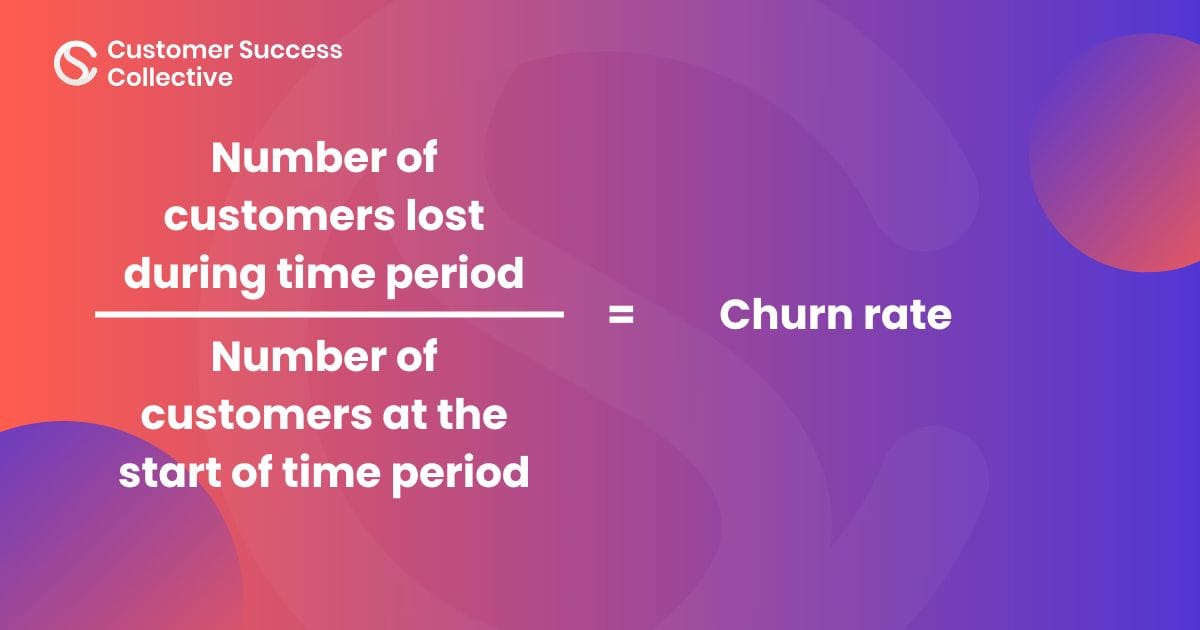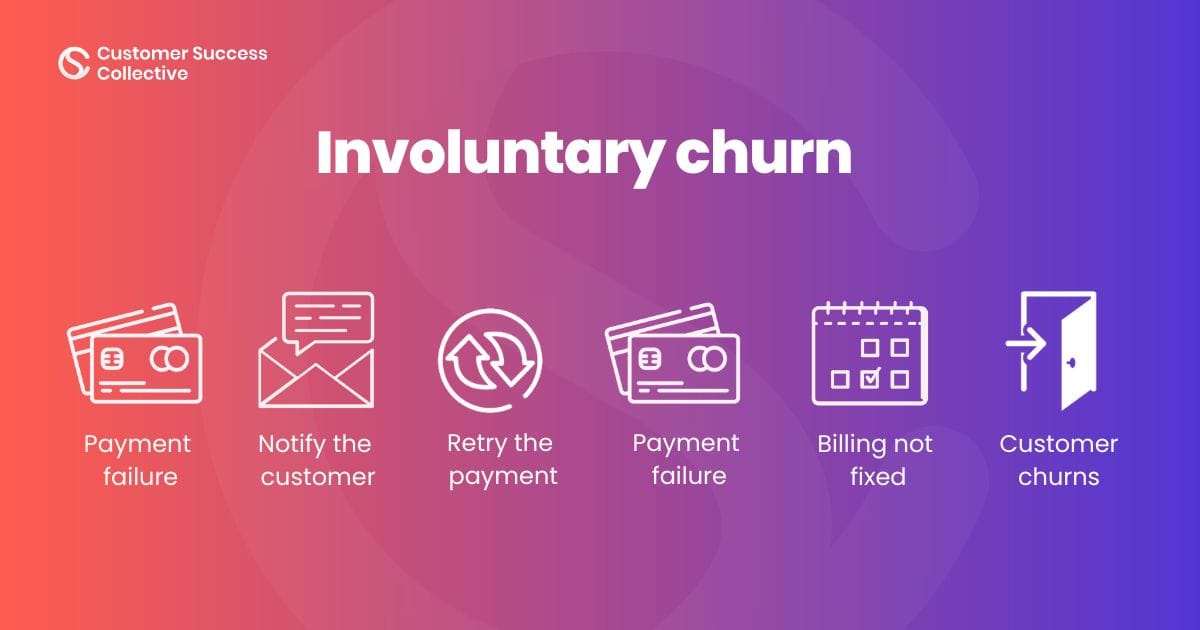Reducing customer churn is crucial for any business that depends on recurring revenue and subscriptions. Even a small increase in retention can translate into significant revenue gains and cost reductions over time.
In today's crowded marketplace, consumers have more options than ever before. It's all too easy for them to leave for a competitor if you don't consistently meet their expectations. The good news is that with the right strategy and commitment, you can substantially reduce customer churn.
With a mix of product improvements, customer service enhancements, and loyalty incentives, you can dramatically increase renewal rates as well as customer lifetime value.
In this article, we explore some of the most effective ways to keep more of your paying customers coming back month after month, specifically:
- What customer churn is
- Why businesses want to reduce it
- The differences between voluntary vs. involuntary churn
- Common causes for why your customers are churning
- 8 proven customer churn prevention techniques
Keep reading to learn the key steps for slashing churn and driving growth by delivering consistently positive customer experiences.
What is customer churn?
Customer churn is a metric highlighting how many of your customer base decided to no longer use your product and/or service, during a certain period. Put simply, churn rates will tell you if your customers are staying or going, and this will guide your efforts moving forward.

The good news is calculating your churn rate is uber-simple; it’s a case of dividing the number of customers lost during a particular period, by the number of customers you had at the beginning of that given period.
For example, if a company has 100 customers at the start of the quarter, and when the second quarter begins this number has decreased to 85, then the churn rate would be 15% because they have 15% fewer customers at the commencement of Q2 than at the start of Q1.
Why is it important to reduce customer churn?
Many companies pour their blood, sweat, and tears into understanding the ins and outs of customer churn, and why it’s a fundamental part of their business operations.
And with good reason; as we alluded to earlier, customers are a vital cog in ensuring the wheels of a business keep on turning, and although the odd customer may slip through the net here and there when a company loses a lot of customers, they hemorrhage money, and that’s never a recipe for success.
Many advocate the notion that attracting new customers is much trickier than keeping hold of existing clientele. Once you’ve done the hard work in getting them through the door, reducing churn is essential, as you may well find yourself in a position where it’s extremely difficult to win customers back, if they slip through your grasp. The reboarding process is considered notoriously difficult and is also an expensive process for a company.
Before you start planning to introduce contingency plans in a bid to minimize or reduce churn, it’s important to identify the two types:
- Voluntary churn
- Involuntary churn.
Involuntary vs. voluntary churn
Involuntary churn is when a customer’s access to a product or service is ended by the company itself.
For example, if payment methods can’t be processed, or the customer is violating the terms and conditions of their contractual agreement, these are typically considered suitable grounds for the company to bring an agreement to a close. As the name suggests, the customer is involuntarily ending their association with the company, and the decision is taken out of their hands.

Voluntary churn is when the customer takes it upon themselves to stop using the product or service. This can be attributed to factors such as poor service quality or financial reasons. Unlike involuntary churn, a conscious decision is made by the customer to end the agreement on their own accord, i.e. they volunteer to relinquish their access to the company’s services.
Common causes for why your customers are churning
There are six common causes of customer churn. Let's look into each of them to determine how they impact churn rates.
High pricing
Nailing your pricing strategy isn’t only important for a successful product launch. In fact, it’ll contribute a great deal to pleasing the customers who are a part of your target market.
In many ways, pricing is tricky, because everyone’s bound by varying degrees of financial boundaries. However, you can get the golden nuggets of information you need by speaking with your audience and understanding their respective budgets. This will help you create a product that:
- Will solve their problem
- Won’t break their bank account
If prospective customers believe your product is overpriced, then they’ll seek a lower-priced alternative, and you’ll be left kicking your heels, while your competitor benefits from poor planning.
That said, it isn’t only overpriced products you need to think about. If you release an offering and it’s ludicrously cheap, this can make them think twice about whether your product is credible, and they may be tempted to pay marginally higher prices with another provider to secure a product they perceive to be of higher quality.
Poor customer service
Have you ever bought a product, encountered technical difficulties, and experienced a thoroughly forgettable experience when you’ve sought help?
If so, you’ll be au fait with one of the main reasons so many companies experience high levels of customer churn.
Bringing an awesome product to the customer is just a piece of a pretty large puzzle. You can have the greatest product on the market, but if your customer support network is appalling, this will have a profound impact on user experience, and before you know it, they’ll be here one minute, and gone the next.
Ask yourself truthfully: if a customer experienced a problem and needed technical support, could they get the help they need quickly, efficiently, and practically? If you’re unable to answer with a resounding "yes," then go back to the drawing board, and start from scratch, because poor customer service will more often than not have one outcome – sky-high churn rates.

Lack of customer engagement
The customer journey doesn’t end when they hand over your cash and receive your product or service; companies need to show a vested interest in engaging with their customers to create an emotional bond between their brand and their clientele.
When brands engage with their customers, this makes them feel special, and prompts customers to buy on a more consistent basis and promote a company’s products and services on a broader scale; it’s an essential element of a successful customer success strategy.
When companies don’t engage with their customer base, people have no emotional ties with the organization. This makes the decision to seek an alternative far easier than if they’re being treated well.
You wouldn’t want to be somewhere where you don’t feel welcome. If it isn’t good enough for you, why should it be good enough for your customers?

Your service doesn’t deliver
Patience is a rare trait amongst consumers; customers want and expect immediate gratification. It may be a bitter pill to swallow, but if your service isn’t up to scratch, you’re running the risk of losing custom.
Ultimately, a customer purchases a product or a service to solve their pain point: if their eyesight is bad, then they’ll buy a pair of glasses, if they’re bored of watching the television and need something else to entertain them, they may buy a book, if their car’s too small for the family, they’ll head to the dealership and buy a new one.
It’s a perpetual cycle that’s showing no signs of slowing. When a buyer has a problem, signs up for your service, and it doesn’t tick the boxes, they jump ship and look for something that does do what they expect it to - it’s one of the biggest contributors to customer churn rates.
Flaws, glitches, and bugs
Customers buy a service to make their lives easier and from a business perspective, to improve their levels of customer service.
For example, social media scheduling tools offer two-fold benefits to companies, as they allow teams to deliver content en-masse and save time, whilst also keeping their customers up to date with key developments.
When there are technical issues with a product or service, however, this has a domino effect; the provider suffers, and customers relying on the service can lose trust, prompting them to perhaps seek an alternative, to avoid a repeat occurrence.
Your product is deemed a luxury
When the purse strings need tightening, key stakeholders sit down, consider their outgoings, and make a list of what to keep, and what to sacrifice.
Unfortunately, for some companies, their products don't survive the cull, and they’re deemed an unnecessary expense that can be chopped from the monthly bill.

8 proven customer churn prevention techniques
We’ve cherry-picked just some of the contributory factors associated with customer churn rates, but ultimately, identifying ways to stop customers leaving is what matters for you and your business.
Check out some ways you can reduce customer churn and boost those all-important retention rates.
1. Act on customer feedback
Sure, it’s the biggest cliche in the book, but you need to put the customer’s needs first; if you aren't keeping your customers happy, you’re leaving yourself susceptible to higher churn rates.
You mustn’t make decisions based on assumptions; speak with your customers and validate your thoughts. By communicating with them, your customers will see you’re putting their best interests first, increasing morale, and brand loyalty.
Whether it’s customer advisory boards or focus groups, make the most of customer insights to gain an understanding of what your customer's thoughts are now, and where you can improve your products in the future.
And feedback isn’t always based solely on what you didn’t do right. For example, customer feedback may reveal that your USP didn’t catch the attention of your audience at all, and they preferred another feature, in which case, your brand positioning and messaging can be tweaked, accordingly.
In acting proactivity, as opposed to reactively, this allows you to rectify potential hiccups before they happen, instead of picking up the pieces further down the line.

2. Incentivize customers
Incentives attribute value to your customers, and, in turn, enhance overall satisfaction.
As we mentioned before, winning customers back is hard. Rewarding your customers for using your service suits both parties: they’re often enticed by the freebie, and you keep them out of the clutch of your competitors.
For example, have you ever gone to McDonald's over Burger King because you’re one stamp away from a free coffee, despite the fact Burger King is two blocks away and McDonald's is a 15-minute walk away?
In that case, you have first-hand experience of the powers of customer incentives.

3. Lean into personalization
Let's consider this email example. It's a product update email:
Hey there,
[Company's Name] has a brand-new range of products you may be interested in.
Click here for more information.
Thanks,
[Company's team]
We'd bet good money your reaction to this email was the same as ours: it was boring, generic and impersonal. 🥱
No one wants to bore their customers. Let’s try this on for size, instead:
Hey [Customer's Name],
We’ve checked out your previous purchases, and have picked a few brand-new products from our range we think you’ll love!
And because we’re in a giving mood, here’s a 20% discount code for you to save some cash, but be quick – this offer expires this weekend!
Take care,
Your friends at [Company's Name]
By addressing the recipient with their first name, including tailored product suggestions for the customer, as well as an incentive of a limited-time-only voucher, the second email is much friendlier, less generic, and feels as though a person is talking to the customer, whereas the first draft could well apply to anyone in the database. 👍
Customers are interested in relevance; if they’re targeted with services that aren’t appropriate for their age, demographic, price budget, etc. then the likelihood is they’ll focus their attention on companies who take the time to learn about what they want, and more importantly, deliver it to them.
Impersonal messaging is suggestive that your company hasn't taken the time to learn about the customer and their requirements, and they’ll be made to feel like a mere statistic, a cog in a wheel.

4. Introduce an action plan
When you experience customer churn, it’s essential to have an action plan in place to try and understand why they churned, how you prevent a repeat occurrence, and what you can do to keep your existing customers happy.
5. Identify the problem
Ultimately, an action plan must establish where things began to unravel for your company, and why the person decided to take their custom elsewhere. Sometimes, companies can be embarrassed about reaching out and asking churned users why they’re not happy with the service provided, but so long as you approach the customer the right way, many will be happy to reciprocate and provide feedback to help you identify your flaws.
6. Use your findings
There are times when companies find out information and decide to ignore it because it isn’t what they want to hear.
Develop a thick skin, listen to criticism, and use the feedback and findings to improve your future strategy. After all, what’s the point in looking for an answer, only to hide from the truth?
7. Share your knowledge
Customer success teams play a critical role in establishing an understanding of how customer churn is affecting a business, yet you need to ensure that every team across the business is informed of your findings.
Always be sure to share insights, and communicate essential information to enhance your offerings.
8. Go above and beyond
Regardless of your customer’s core reasons behind investing in a service, they’ll always appreciate getting more than they bargained for.
Additional services offered at no additional cost can make the world of difference in convincing your customers you’re the right fit for them and that you have their best interests at the forefront of your mind.
For example, a customer may enroll in a webinar on OKRs. Why not send them a complimentary eBook to supplement their learning?
Small, yet significant details such as these will go a long way to building trust and confidence amongst your customers, and they’ll be inclined to stick around for much longer.
How to prevent churn in a nutshell
Customer churn is a problem within the business that isn’t going away anytime soon. However, if you understand it, prepare for it, and introduce relevant measures, the impact on your business can be managed, via cross-team collaboration.
Re-familiarize yourself with the essentials of customer success
Looking for a well-rounded course that teaches the fundamental properties of customer success? Then look no further than our flagship course, Customer Success Core: Certified.
Accelerate your customer success career with the most cutting-edge and comprehensive curriculum around, and walk away with new knowledge, tried and tested strategies, and a competitive edge.
By the end of the course, you'll:
🧠 Understand the full breadth of the CS function.
💪 Be armed with all and only the most up-to-date and successful CS tactics and trends.
📈 Up-skill yourself in every core competency required for your role, and prove your strategic value.
🏆 Tap into the proven strategies used at some of the world’s most innovative and established brands.
🔖 Earn an official certification to boost your resumé and accelerate your career.


